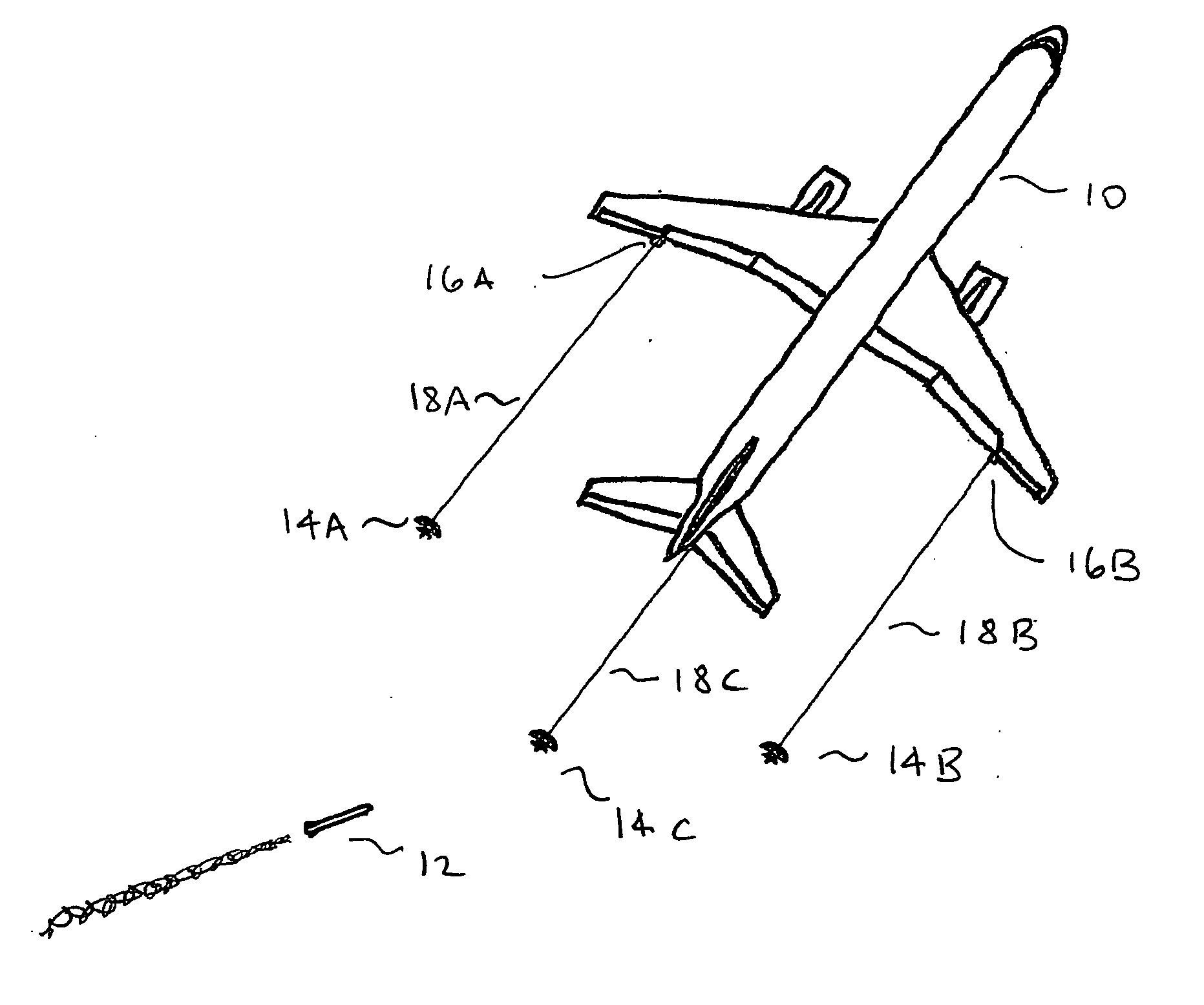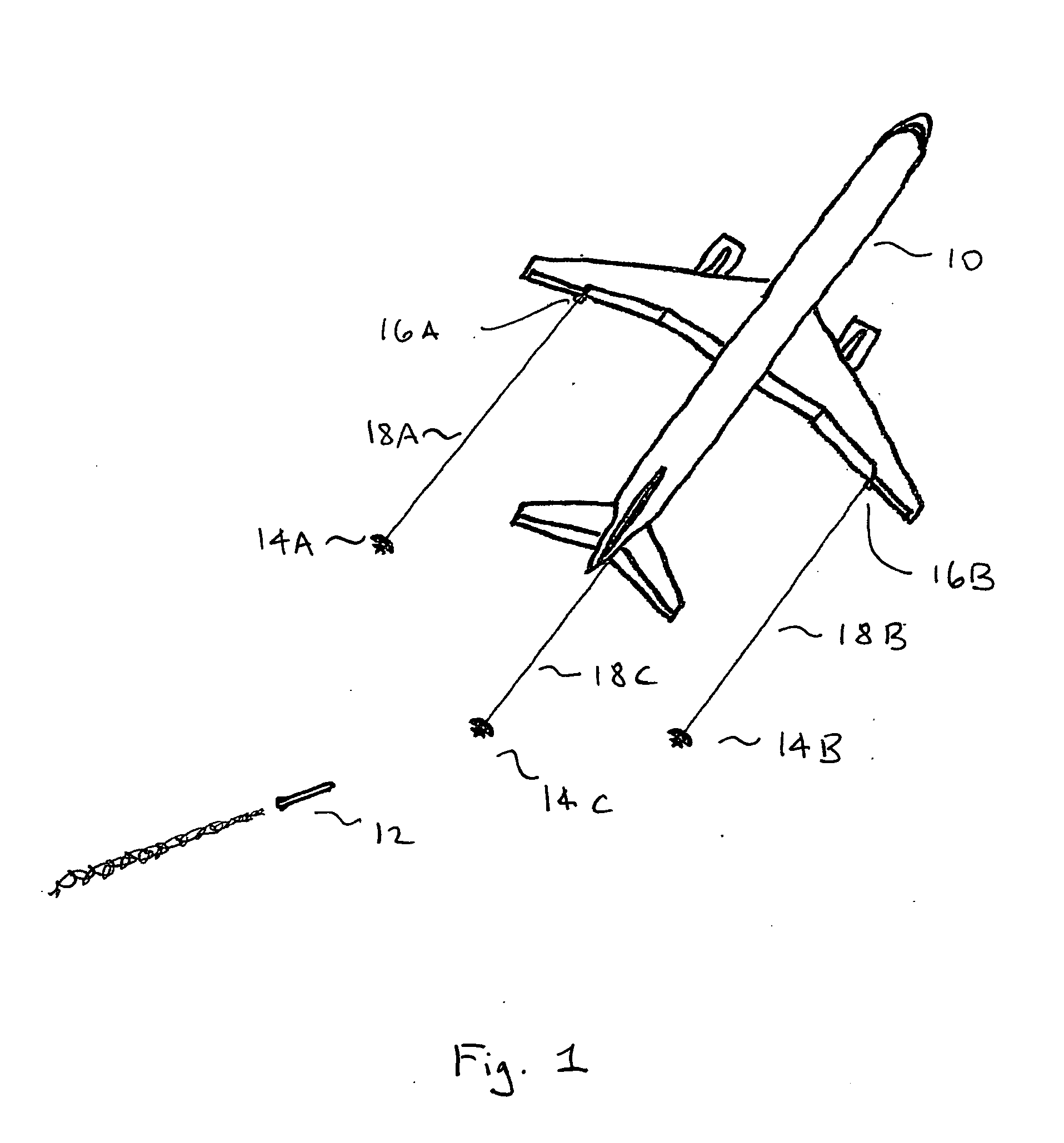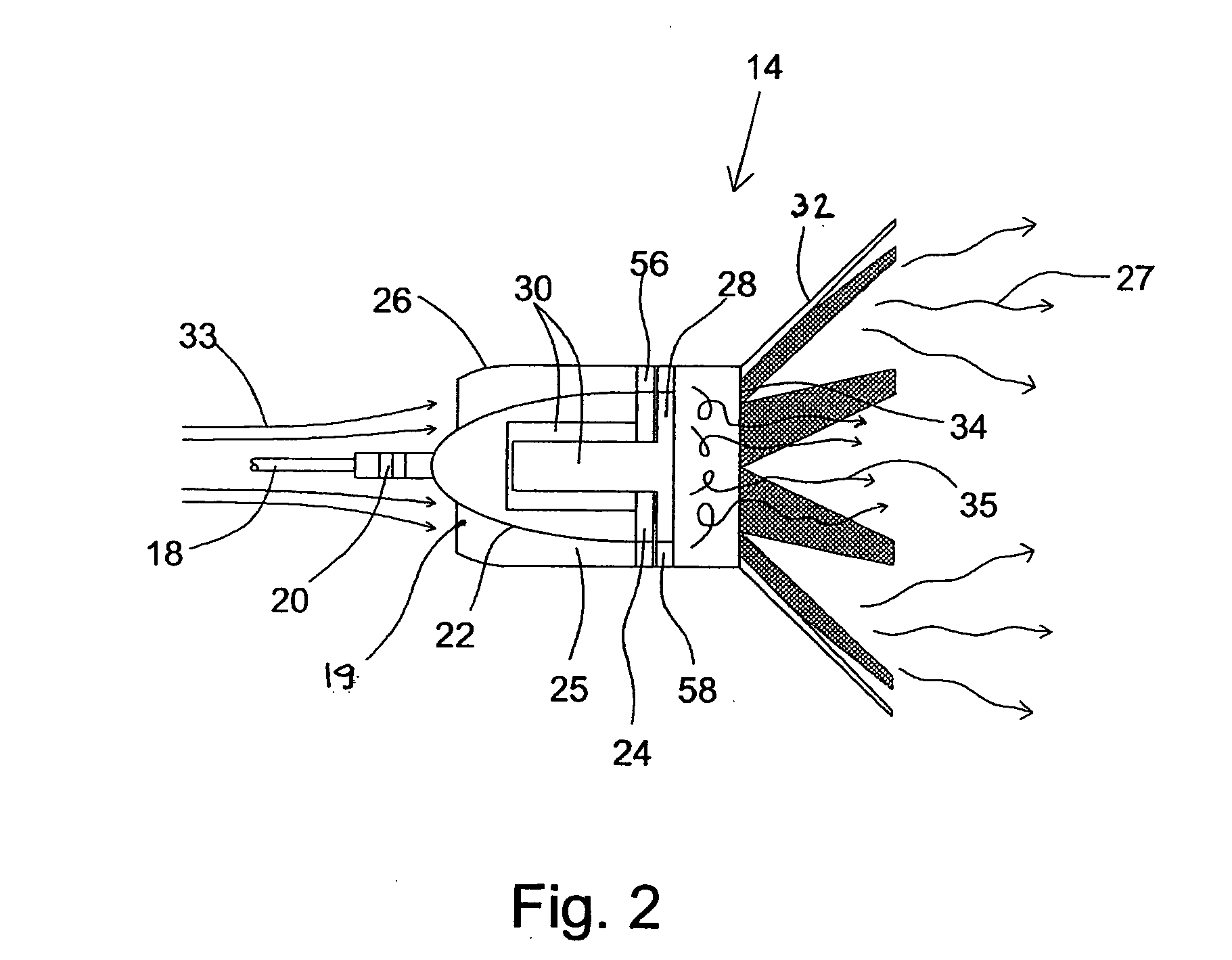Self-powered tethered decoy for heat-seeking transport aircraft missile defense
a transport aircraft and missile defense technology, applied in the direction of transportation and packaging, rigid containers, reflecting targets, etc., can solve the problems of voss et al not disclosing the use of internal or external turbines or alternators, and voss et al not disclosing or discussing direct control of combined turbine-alternator electrical or electronic means, so as to reduce drag and fuel penalties, the effect of increasing the cross-section
- Summary
- Abstract
- Description
- Claims
- Application Information
AI Technical Summary
Problems solved by technology
Method used
Image
Examples
Embodiment Construction
[0101]FIG. 1 depicts several decoys 14A-C deployed from various locations on a transport aircraft 10. Decoys 14A-C are stowed in under wing and fuselage housing pods 16A-C during ground and high-altitude operations. The housing pods contain deployment and retrieval mechanisms for ejecting, reeling out, reeling in, and stowing decoys 14A-C tethered on lines 18A-C. [See U.S. Pat. Nos. 6,683,555, & 6,779,796 to M. A. Carlson et al.] Decoy 14C is towed by tether 18C passing from a fuselage pod (not shown) located at the aft, in or on the aircraft 10. Other possible locations for the decoy housing pods 16, include wingtips and the tips of the horizontal and vertical stabilizers. A heat-seeking missile 12 is depicted as being drawn to decoy 14C. Decoy 14C (or any other decoy) may be sacrificed to missile 12. One or more decoys can be employed per transport aircraft.
[0102]FIG. 2 schematically shows a cross section of the essential components of an embodiment of a self-powered sacrificial ...
PUM
 Login to View More
Login to View More Abstract
Description
Claims
Application Information
 Login to View More
Login to View More - R&D
- Intellectual Property
- Life Sciences
- Materials
- Tech Scout
- Unparalleled Data Quality
- Higher Quality Content
- 60% Fewer Hallucinations
Browse by: Latest US Patents, China's latest patents, Technical Efficacy Thesaurus, Application Domain, Technology Topic, Popular Technical Reports.
© 2025 PatSnap. All rights reserved.Legal|Privacy policy|Modern Slavery Act Transparency Statement|Sitemap|About US| Contact US: help@patsnap.com



